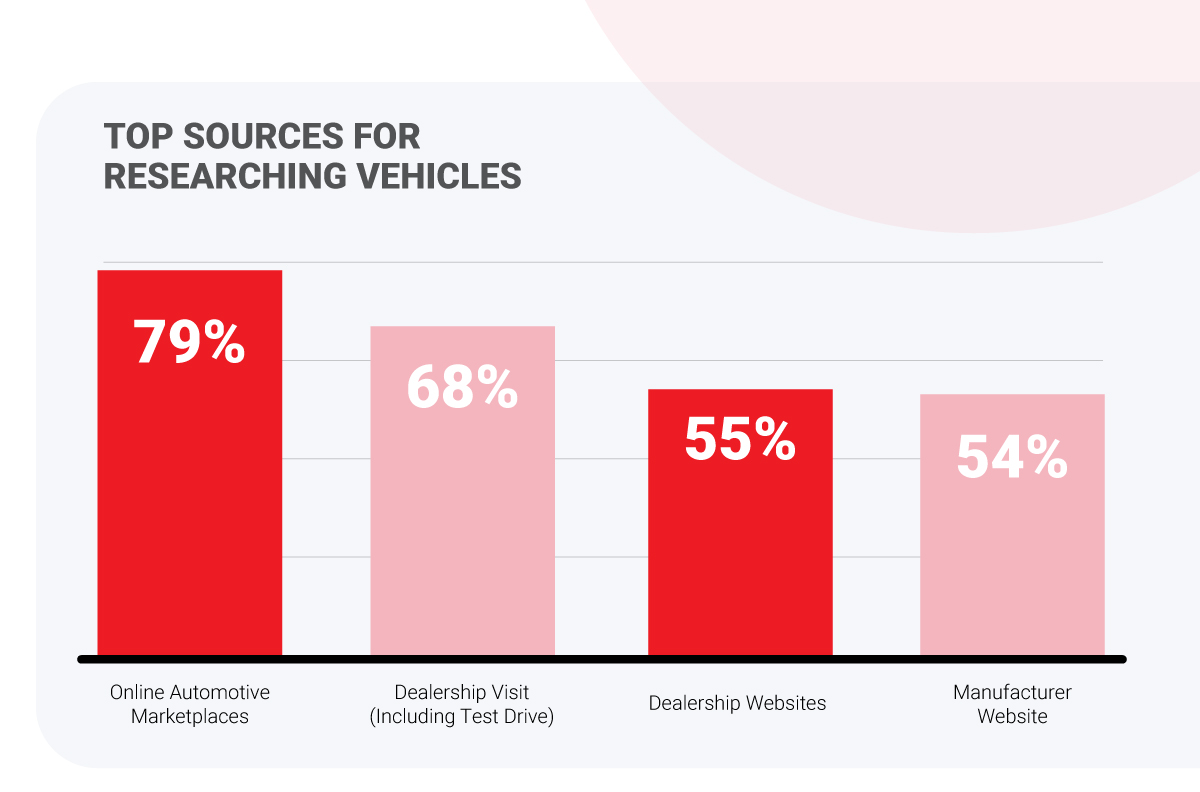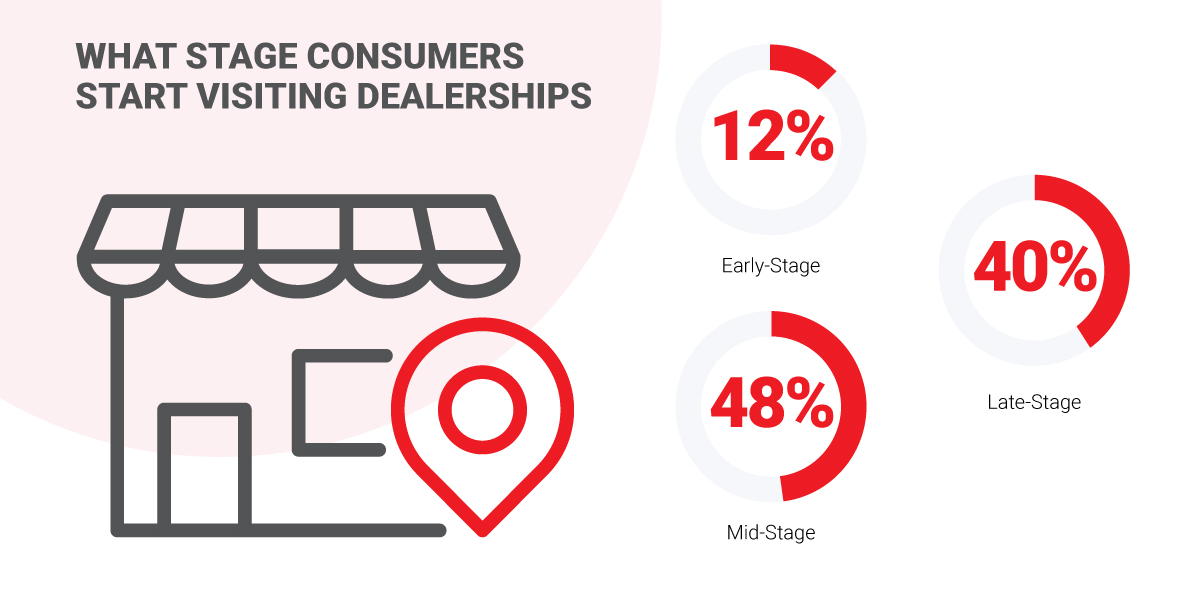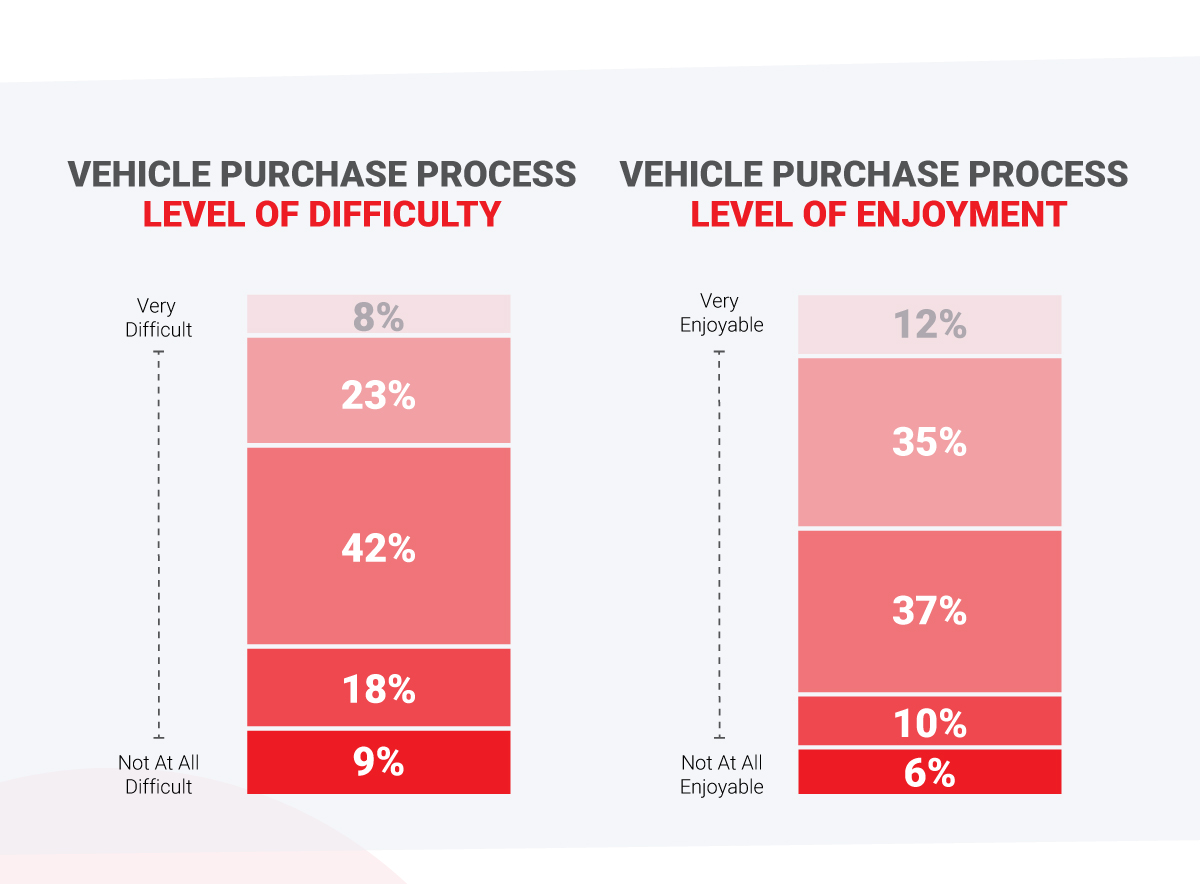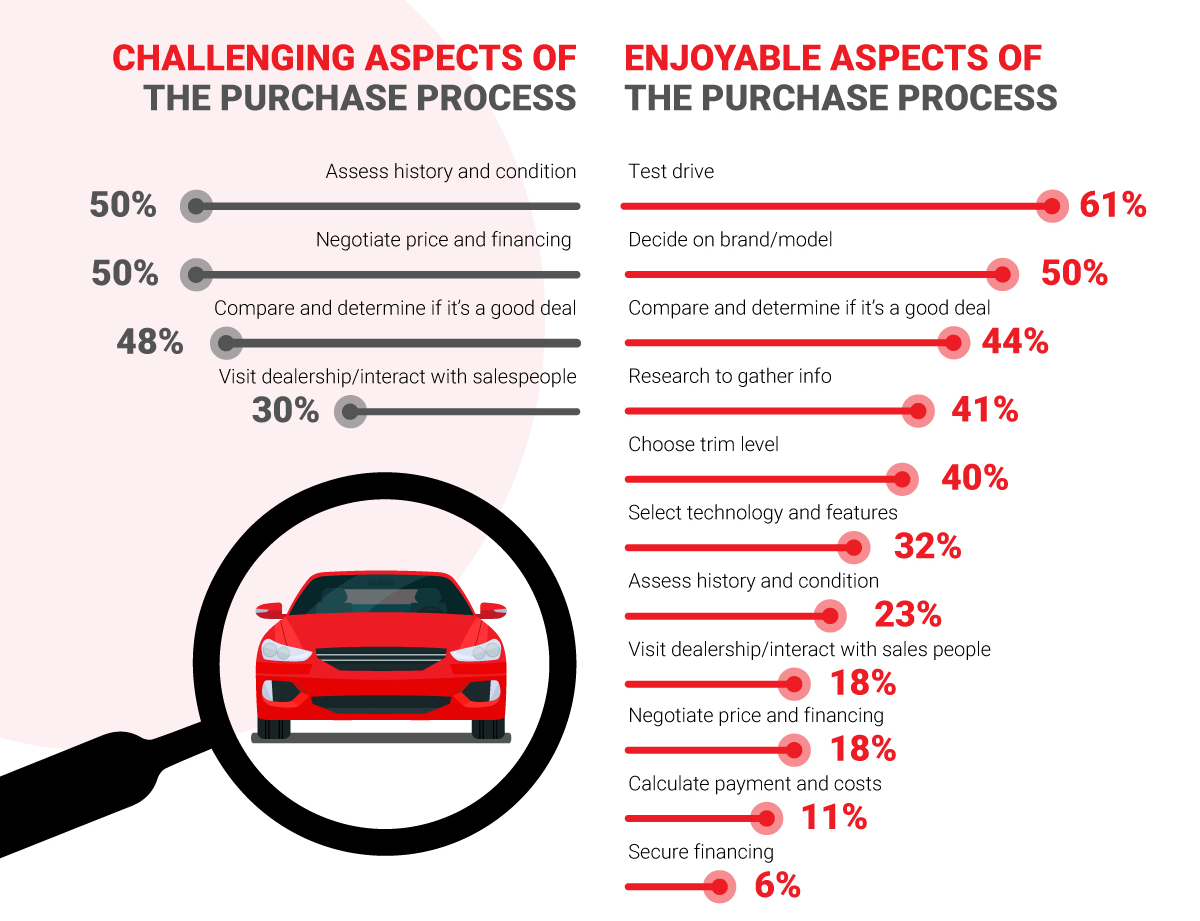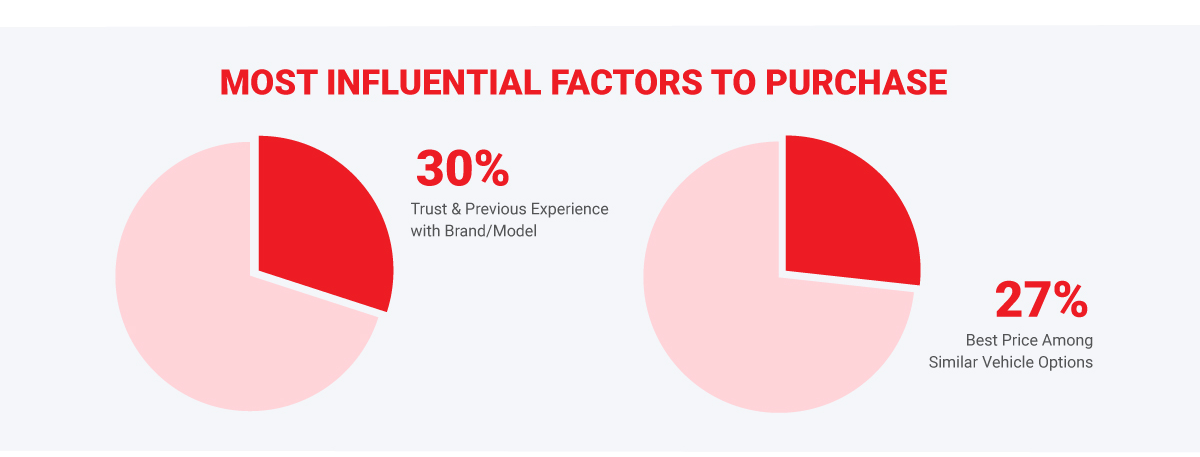Throughout our ongoing consumer research, it has become abundantly clear that car shopping behaviour is constantly in flux. From how consumers shop, to where they shop and their preferred tools and resources, these factors often vary. In our latest study we turned to AutoTrader.ca car shoppers to understand their car buying process preferences and behaviours to help you pivot and better align to consumer needs in 2022.
We opened the study by asking car shoppers on AutoTrader.ca how many vehicles they’ve purchased throughout their lifetime. The majority of respondents, 71%, have personally bought more than four vehicles. Of those surveyed, 27% state they know the car buying process through and through, while 39% are somewhat knowledgeable. What’s interesting is that although most of these shoppers have been through the car buying process, there remains room for improvement to provide them with more resources and education, which we touch on further into the results of the study.

